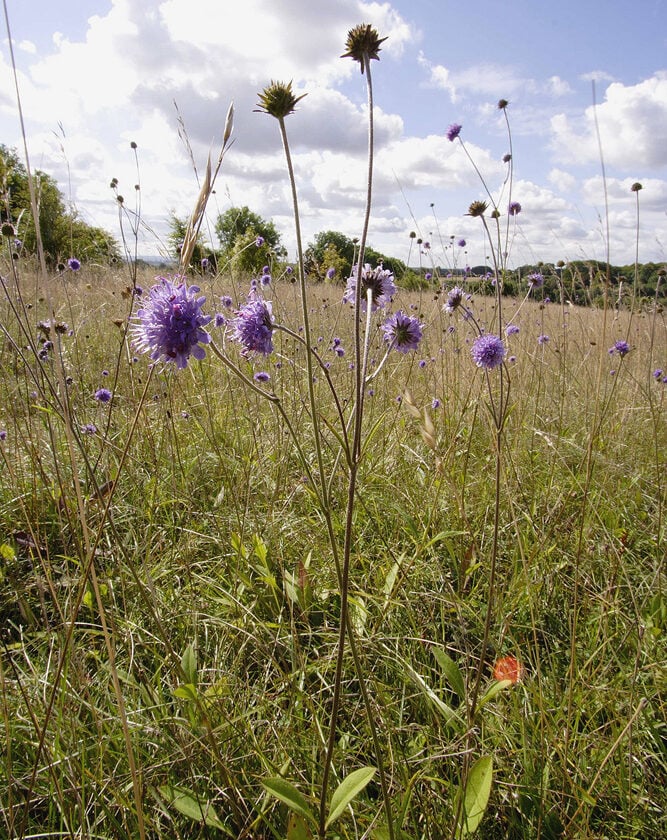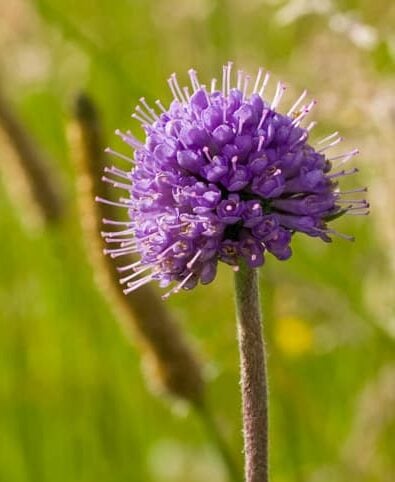Description
Devil’s-bit scabious is so named because its roots end abruptly as though bitten off by the devil. It has a distinctive dark violet-blue, roundish ‘pincushion’ flower-head backed by green bracts. The leaves of the basal rosette are elliptical, dark green and often blotched with purple whilst the few on the stem are narrower and occasionally toothed. Flowers appear from June to October.
Habitat Information
Devil’s-bit scabious is a slow growing, native perennial of damp to reasonably free-draining soils with a preference for those that are neutral to mildly acidic. It exploits areas where more dominant species are held in check either through grazing pressure or low fertility and is found in a range of habitats including hay meadows, damp pasture, woodland rides, heaths and mires.
Devil’s-bit scabious provides nectar for hoverflies, bees and butterflies, and is famously the larval food plant of the rare marsh fritillary.
Growing Information
Best sown in the autumn.



